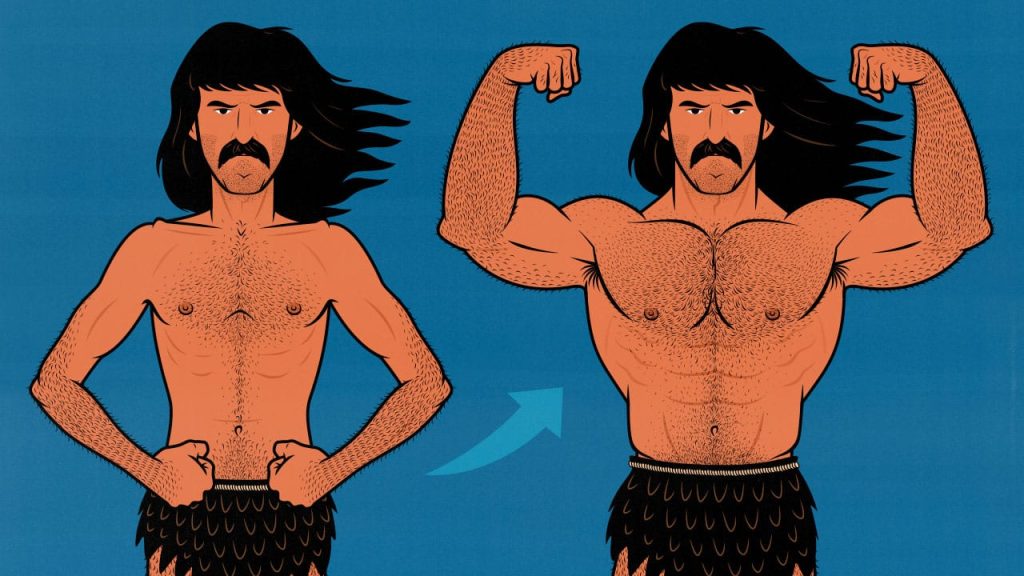
The Bulking Guide for Skinny Beginners
Bulking is often derided as the fool’s way of building muscle. That’s true on average. Most people are already overweight. The last thing they need is more weight. But if you’re thin, underweight, or lean, bulking is by far the best way to build muscle.
In this guide, we’ll teach you exactly how to bulk.
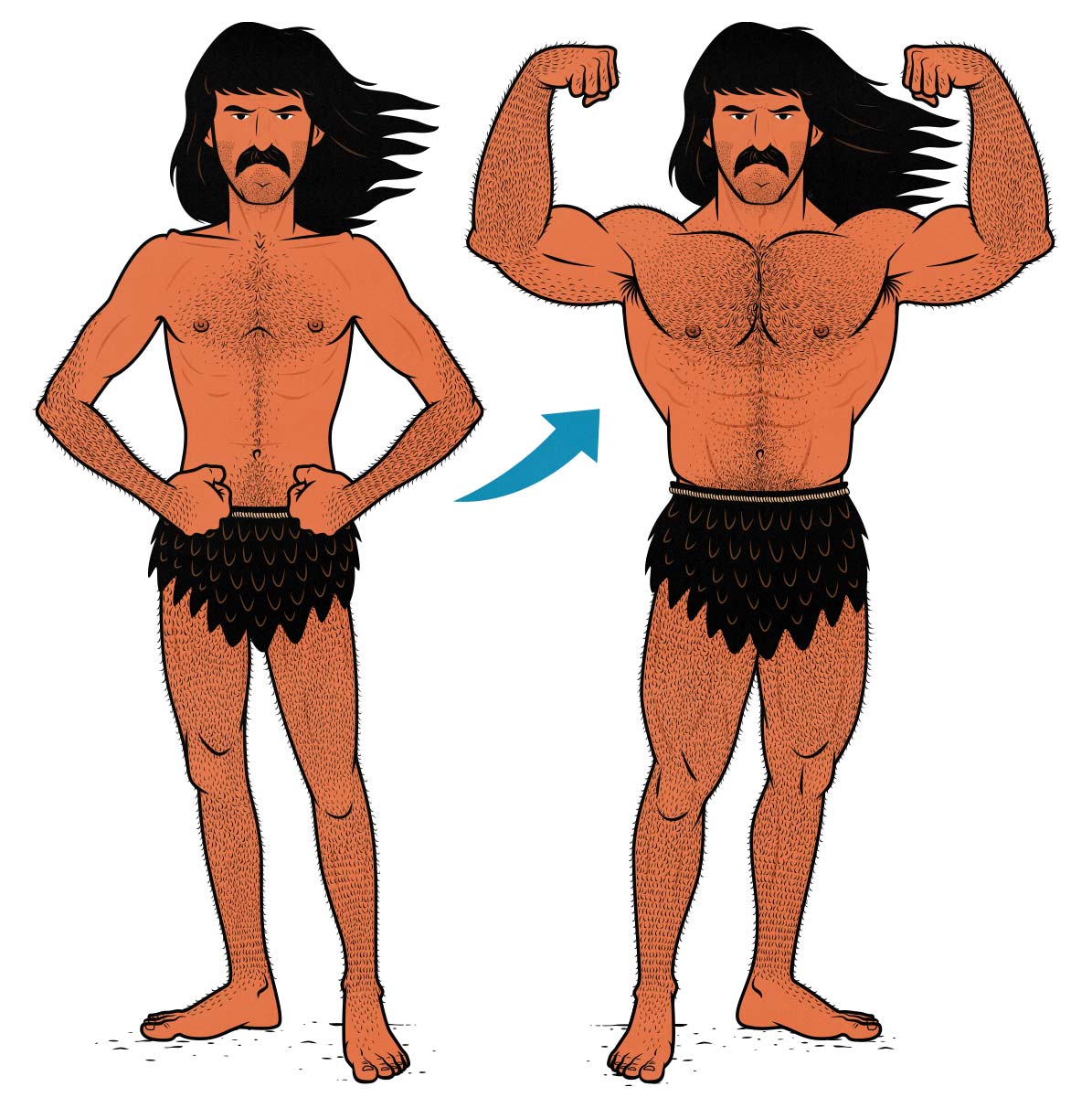
What is Bulking?
Bulking is when you gain weight with the goal of gaining muscle mass. If your goal weight is higher than your current weight, bulking is the leanest way to get there. The only other option is regular weight gain.
Regular weight gain is when you gain weight without emphasizing muscle growth. This is what most people do. This is why most people are overweight or obese.
If you’re trying to gain weight, there are only two paths to venture down. Bulking is the better one. You’ll build more muscle, gain less fat, feel better, look better, get fitter, and do a better job of improving your health.
The Different Types of Bulking
If someone claims bulking makes people fat, they’re talking about dreamer bulking. If they say bulking is unhealthy, they’re talking about dirty bulking. If they’re talking about lean muscle growth, they’re talking about lean bulking. If they recommend eating a restrictive diet, they’re talking about clean bulking.
Here are the bulking terms you ought to know:
- Classic bulking: Gaining weight with equal emphasis on building muscle and avoiding fat gain. The idea is to line up your rate of weight gain with your expected rate of muscle growth. It usually uses an 80/20 diet, where 80% of the calories are healthy, and 20% are discretionary.
- Aggressive bulking: Maximizing your rate of muscle growth by training harder, eating better, and eating more. It’s the fastest way to build muscle, especially for naturally skinny guys, but it also carries a higher risk of fat gain. This is how I gained most of my muscle mass.
- Lean bulking: Building muscle leanly by keeping your calorie surplus small and consistent, even if it bottlenecks your rate of muscle growth. Lean bulking usually means counting calories to keep the surplus small and precise. This works especially well for people already on the cusp of being overweight.
- Recomping (aka Gaintaining and Maingaining): Building muscle without gaining weight. It can work great if you’re skinny-fat or overweight. It won’t work at all if you’re skinny or lean.
- Clean Bulking: Bulking with a progressive diet that shuns white foods: white rice, white bread, and white potatoes. It’s the idea that it’s better to eat a more diverse and colourful diet: brown rice, whole-grain bread, and sweet potatoes. It’s one of several healthy ways to eat.
- Dirty Bulking: Bulking with reckless indifference to the quality of your diet. It’s the hedonistic pursuit of the pleasures of junk food. It’s nutritional anarchy. It isn’t a healthy way to bulk, and it tends to result in excess fat gain.
- Dreamer Bulking: Eating in a calorie surplus without stimulating enough muscle growth to justify that surplus, resulting in excess fat gain. This is common with beginners, and understandably so. Most muscular men have had to burn away the results of a dreamer bulk.
- Phantom Bulking: Trying to bulk while failing to eat enough food to gain weight. It’s a bulk without substance, without mass. When we surveyed our newsletter subscribers, 67% said they’d failed a bulk because they’d failed to eat enough. I’m among that 67%.
- Cyclical Bulking: When you shift between calorie surpluses and deficits, trying to build muscle in the surpluses and lose fat in the deficits. For example, skipping breakfast, fasting on Sundays, or doing mini-cuts. This kills your momentum, undermining your efforts.
- Reverse Bulking: When you finish bulking and begin listening to your appetite again. The idea is to keep lifting weights, keep eating well, and keep living a healthy lifestyle while letting yourself lose a bit of weight, keeping your muscles and reclaiming the leanness you lost.
- Bulking Season: The period of the year focused on getting bigger, stronger, and fitter. Athletes and bodybuilders call this their “off-season.” It’s when they take a break from competing to improve their strength and conditioning. Casual lifters call this period of growth their “bulking season” instead.
How Should YOU Bulk?
Of all the different ways of bulking, three approaches are considered ideal. You can pick the one that’s best for you:
- Classic bulking works well for regular guys eager to get bigger and stronger.
- Aggressive bulking works best for skinny, underweight, and naturally lean guys.
- Lean bulking works best for guys already on the plumper side or who tend to gain fat more easily.
And, of course, if you’re skinny-fat or overweight, you don’t necessarily need to bulk at all. You can eat according to your appetite, letting your weight change as it will. As long as you’re gradually getting stronger, you don’t need to intentionally eat in a calorie surplus.
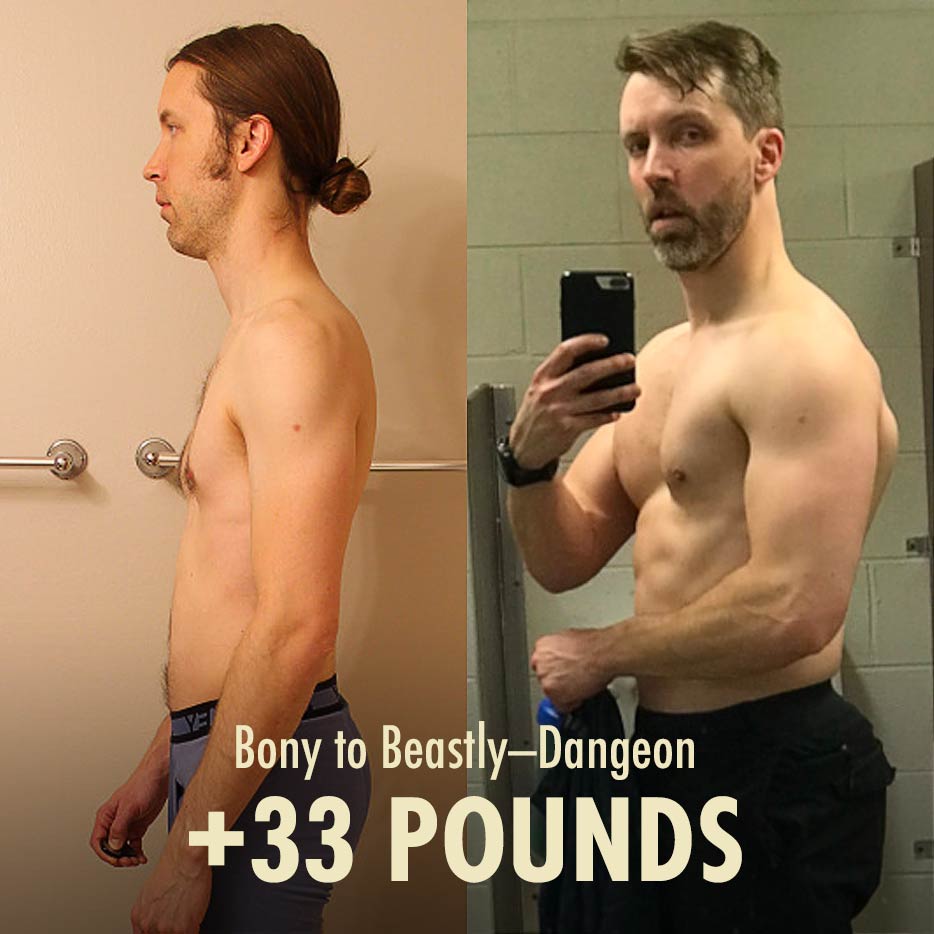
If you want to see what different types of bulks look like on different people, we’ve got a ton of before-and-after photos showing real-life bulking results. You can see how fast guys gained weight, how long they bulked for, and what results they got.
The 5 Bulking Principles
You need to do 5 different things to bulk up successfully. Like the fingers of a fist, you can clench them together and pummel away at your skinniness, bit by bit, until your bones are buried deep beneath thick muscles.
Learning how to bulk can be confusing. Lifting weights is an entire hobby, and that’s only the first part of bulking. I’ll try to keep this as simple as possible but don’t worry if it’s overwhelming at first. Start at the beginning and go from there. Start by lifting.
How to Lift Weights
Hypertrophy training is the first and most important part of bulking. When you challenge your muscles, you stimulate growth—your muscles will attempt to grow. Whether you succeed at building muscle depends on the other four aspects of bulking. Still, stimulation is the first step.
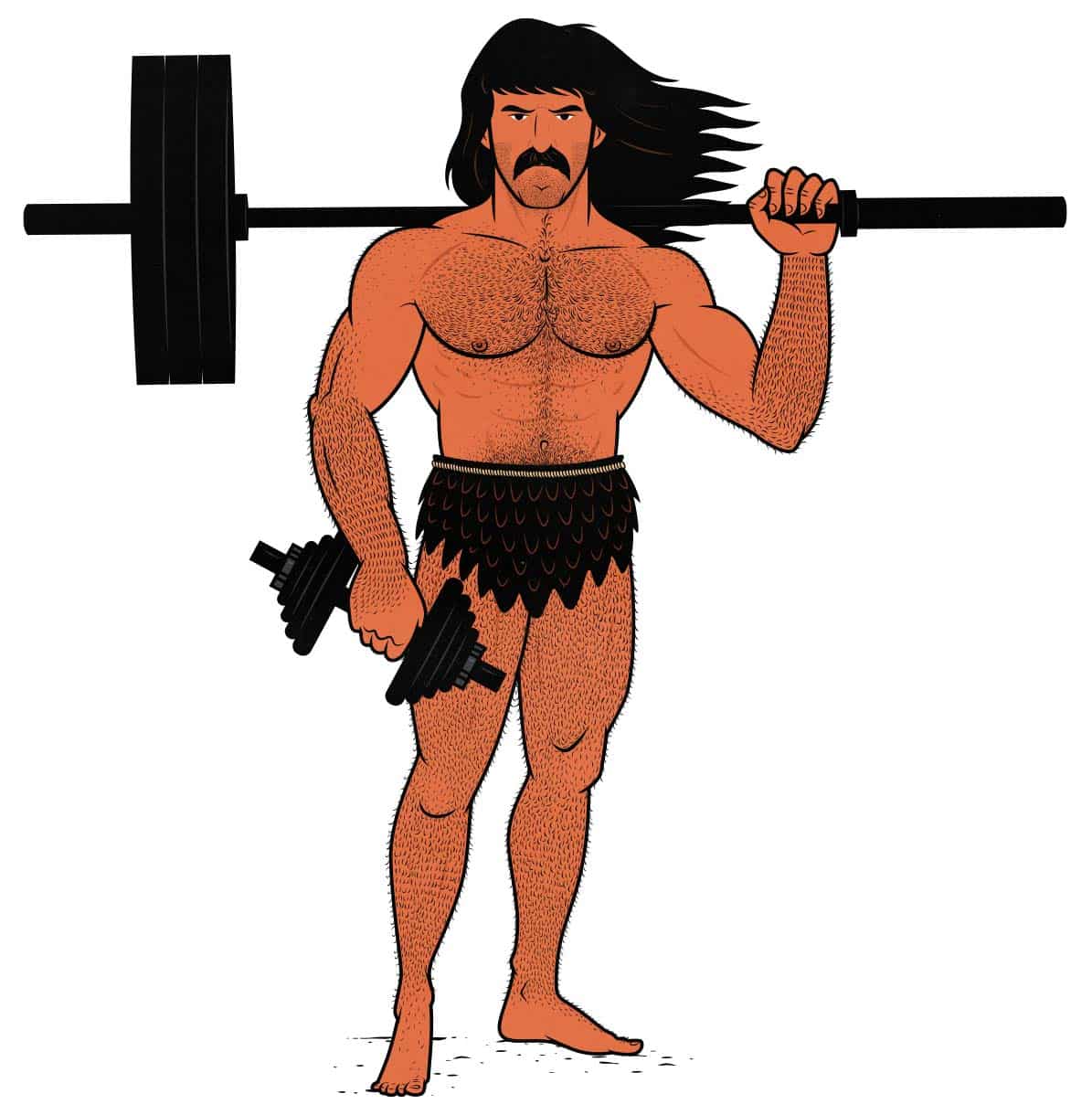
There are different types of hypertrophy training. You could train heavier, focusing on increasing your strength. You could also train lighter, focusing on increasing your work capacity. You could use your body weight, dumbbells, barbells, or train at a full gym. You could even use resistance bands, though they aren’t quite as effective.
Whatever tools and methods you use, build your routine around big compound exercises like squats, deadlift variations, bench presses, push-ups, and chin-ups. Add in smaller isolation exercises for the muscles you’re most eager to grow, such as biceps curls, lateral raises, or neck curls.
If you want help, we have a full novice bulking program. If you already know how to lift weights, we have an intermediate hypertrophy program.
How to Gain Weight
Once you’ve stimulated muscle growth, you need to eat enough food to fuel that growth. You can eat in a smaller calorie surplus, gaining weight slowly and building muscle more leanly. Or you could eat in a larger surplus, gaining weight faster and building muscle more quickly.
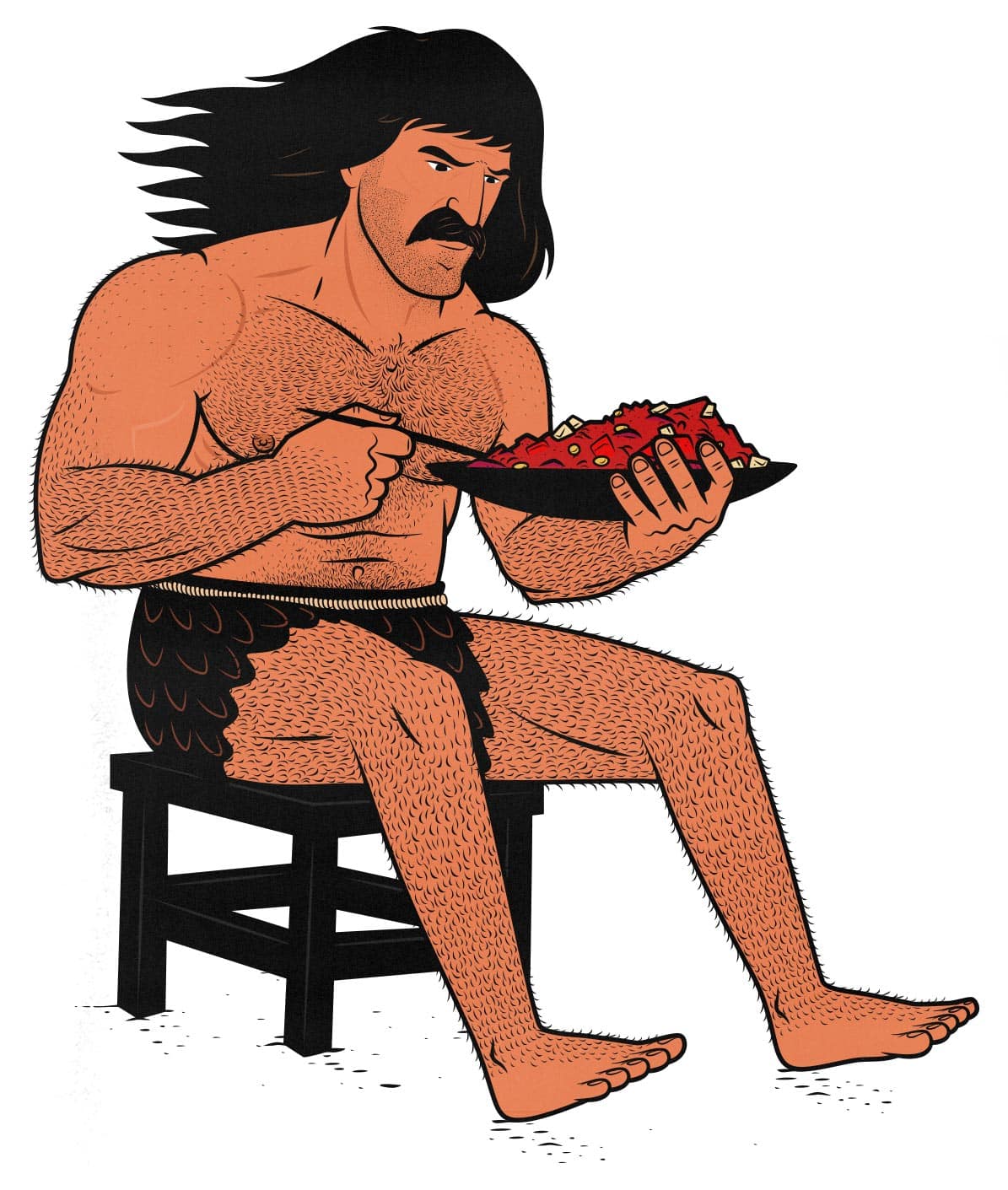
When you think of building muscle, you probably think of protein. And it’s true: you do need to eat enough protein. You should try to eat at least 0.7 grams of protein per pound bodyweight per day. The best way to do that is to include a source of protein in every meal.
But converting protein into muscle is a costly process. It uses quite a bit of energy. Skinny guys don’t have extra reserves of energy stored as body fat. If we aren’t getting extra energy from our diets, we won’t gain weight, and we won’t build muscle. Eating enough food to gain weight is even more important than eating enough protein.
You can track your calories or eat similar meals at similar times every day. Either way, you need to weigh yourself every week to see if you’re eating enough food to gain weight. If you aren’t, add another 200 calories to your diet. Here’s a more detailed guide about tracking and adjusting your calorie intake.
How to Eat A Nutritious Bulking Diet
Eating a nutritious bulking diet will speed up your recovery, increase your rate of muscle growth, improve your health, and give you more energy. Focus on eating high-calorie whole foods like lean meats, seafood, fruits, vegetables, legumes, whole grains, nuts, seeds, cheese, yogurt, and dark chocolate. Use spices, sauces, and dips. Enjoy some coffee or tea.
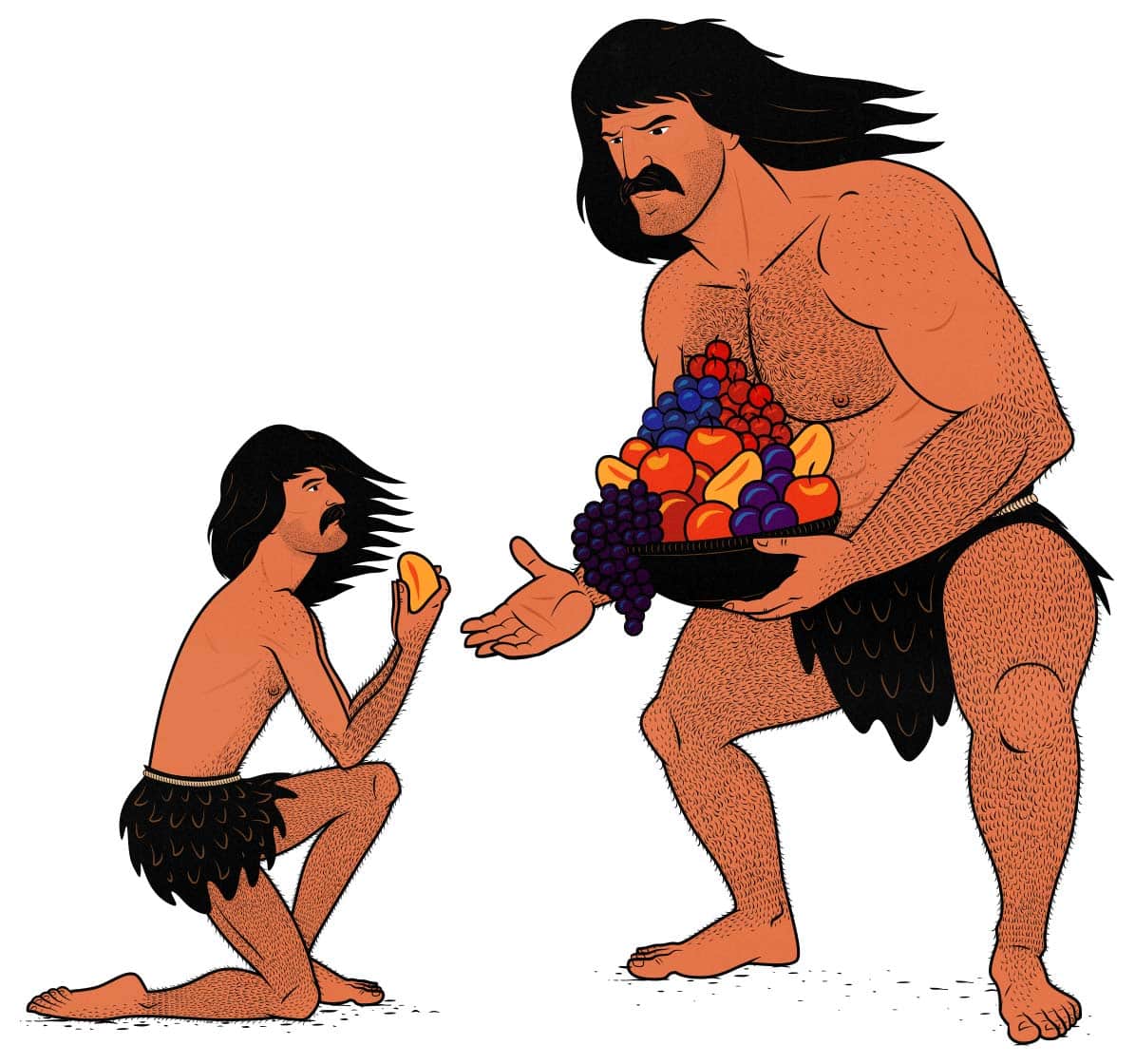
When you’re bulking, you’re trying to eat more food, so forget about mainstream weight-loss diets. Instead, think about dietary strategies that will help you wolf down more nutritious food:
- Don’t go keto. Carbs are a nutritious source of calories and are fantastic for building muscle. Instead of cutting back on them, add more fruits, vegetables, legumes, and whole grains (corn, oats, brown rice, etc) into your diet.
- Don’t start intermittent fasting. Instead, eat more snacks, allowing you to eat smaller meals that fit comfortably into your stomach and digest more smoothly.
- Embrace liquid calories. Blend up smoothies. They’re quick to make, easy to drink, and digest faster than solid foods.
Instead, try to eat a balanced diet made up of balanced bulking meals. Most of your meals should include sources of protein, carbs, fat, and fibre. Think of a meal like chili, mixing lean ground meat with beans, corn, tomatoes, onions, and spices. Or salmon with roast potatoes and asparagus. Or trail mix, yogurt with berries, or smoothies. Or every bodybuilder’s favourite: chicken, rice, and broccoli drizzled with extra-virgin olive oil.
How to Live a Good Bulking Lifestyle
A good lifestyle will improve your recovery, support your overall health, and help you build muscle faster and more leanly. There are quite a few components to living a healthy lifestyle. You probably already know the most important factors:
- Be active enough. If you work a desk job, try to take a 20-minute walk before work. Get up throughout the day. Spend some time on your feet.
- See some sunshine every morning. Let your body know the day has begun, reinforcing a healthy circadian rhythm. Going on a walk is perfect for this.
- Avoid vices like smoking and excessive alcohol consumption.
How to Build Muscle While You Sleep
Once you’re following a good workout program and eating a good bulking diet, the next thing to focus on is sleep. One study showed that participants gained 30% more muscle once they were given a few tips about how to get better sleep (study). Here’s a guide explaining those tips.
The most important thing is to get to bed on time. Most guys need 7–9 hours of sleep, with 8 making for a good default. If you can, try to go to bed within 30 minutes of the same bedtime every night, establishing a strong, steady circadian rhythm.
What Results Can You Expect?
A few months ago, we analyzed the results of 20 guys who finished our bulking program. On average, they gained 25 pounds, adding 4 inches to their shoulder circumference, 2 inches to their waist, and 2 inches to their arms.
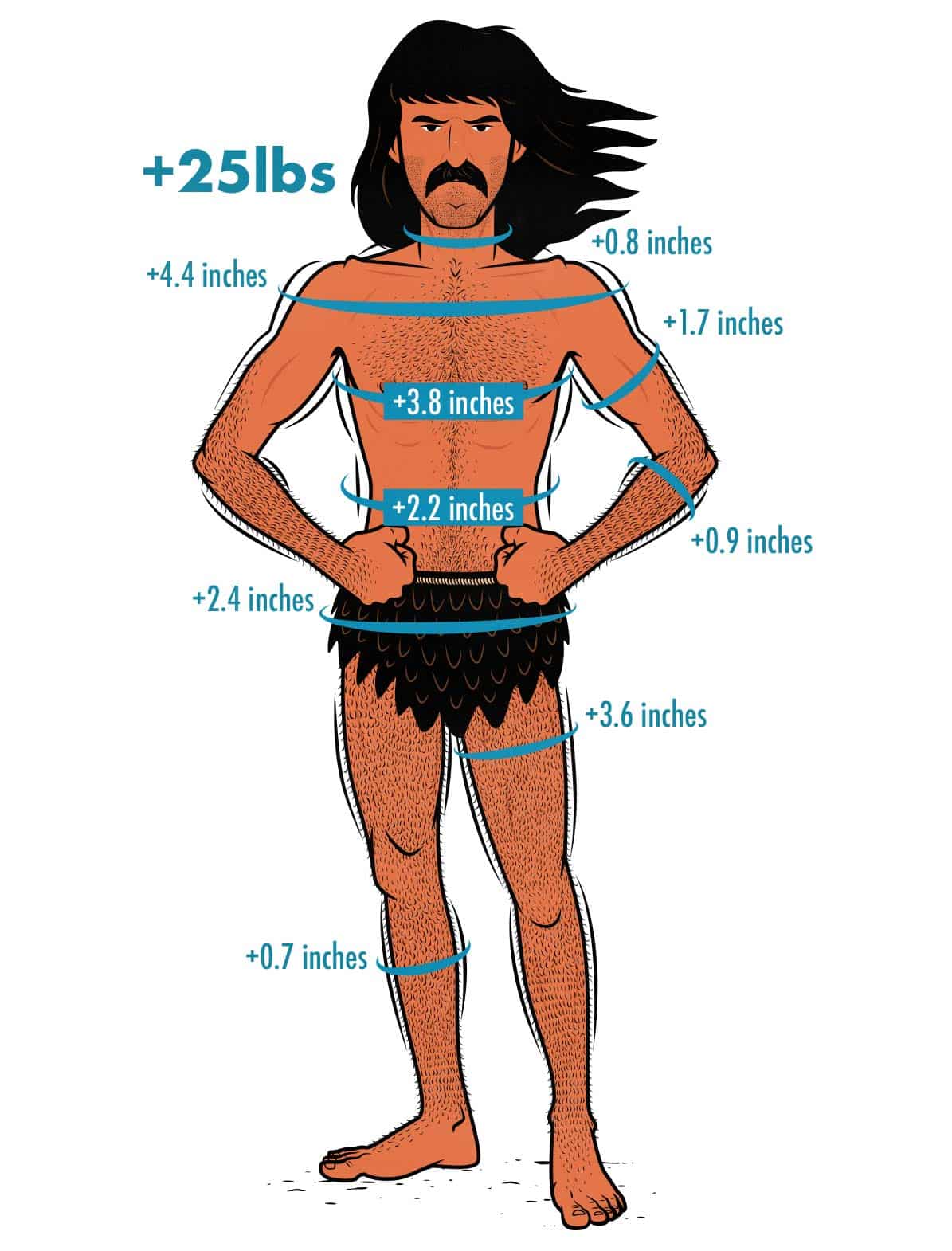
Your bulking results, though, will depend on who you are, how you decide to bulk, and how well you do it. Beginners usually experience “newbie gains,” allowing them to build muscle faster, whereas muscular guys often benefit from bulking more slowly.
How to Maintain Your Gains After Bulking
When you finish your bulk, your muscles will be happy to gear into a second bulk, but your stomach will probably want a vacation. That’s where “reverse bulking” comes in. We’ve got a guide on that here.

Alright, that’s it for now. If you want to know all the ins and outs of building muscle, we have a free newsletter. If you want a full foundational bulking program, including a 5-month full-body workout routine, gain-easy diet guide, recipe book, and online coaching, check out our Bony to Beastly Bulking Program. Or, if you want a customizable intermediate bulking program, check out our Outlift Program.


Muscle-Building Mini-Course via Email
Sign up for our 5-part muscle-building mini-course that covers everything you need to know about:
Here are some related articles